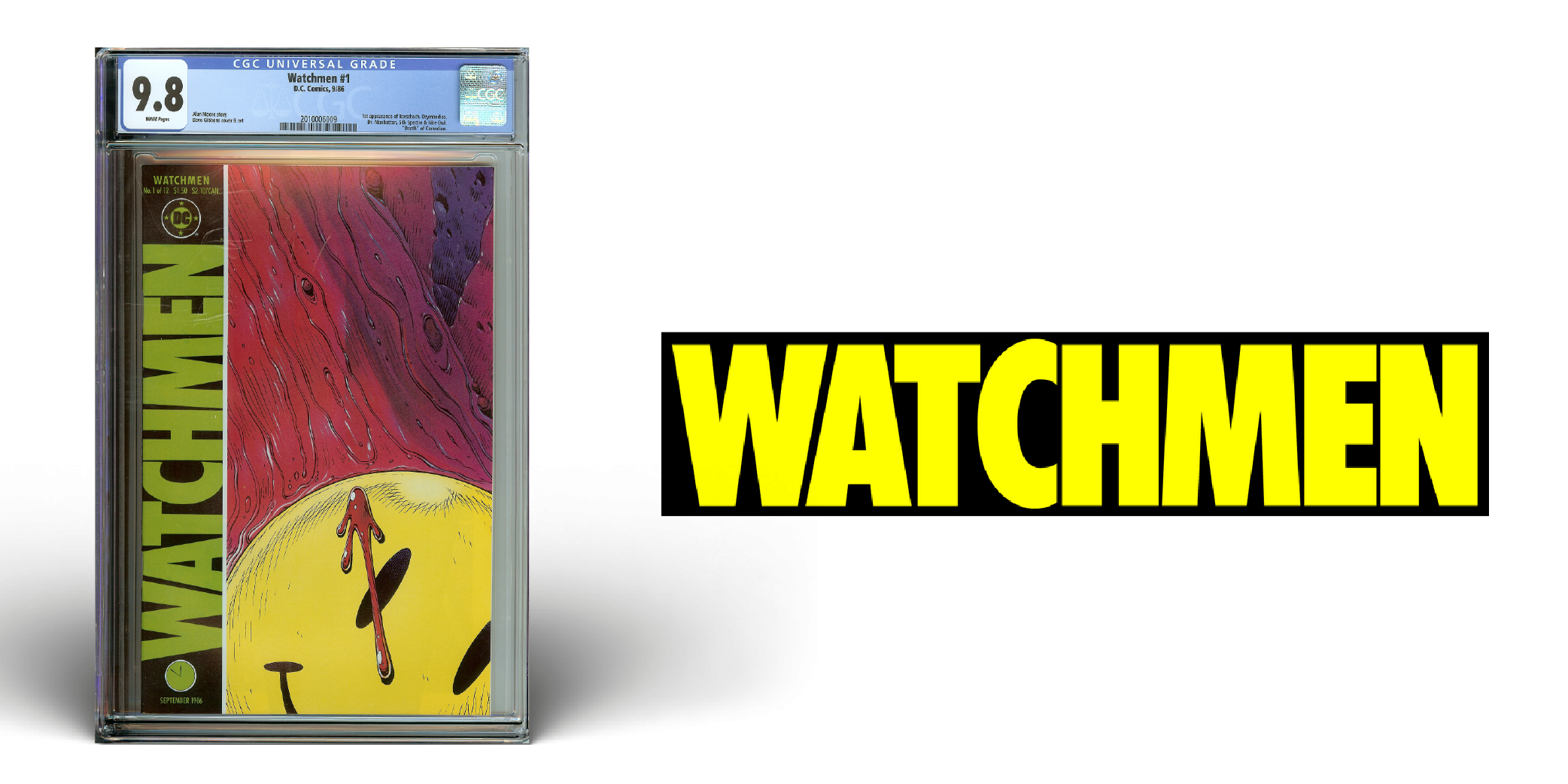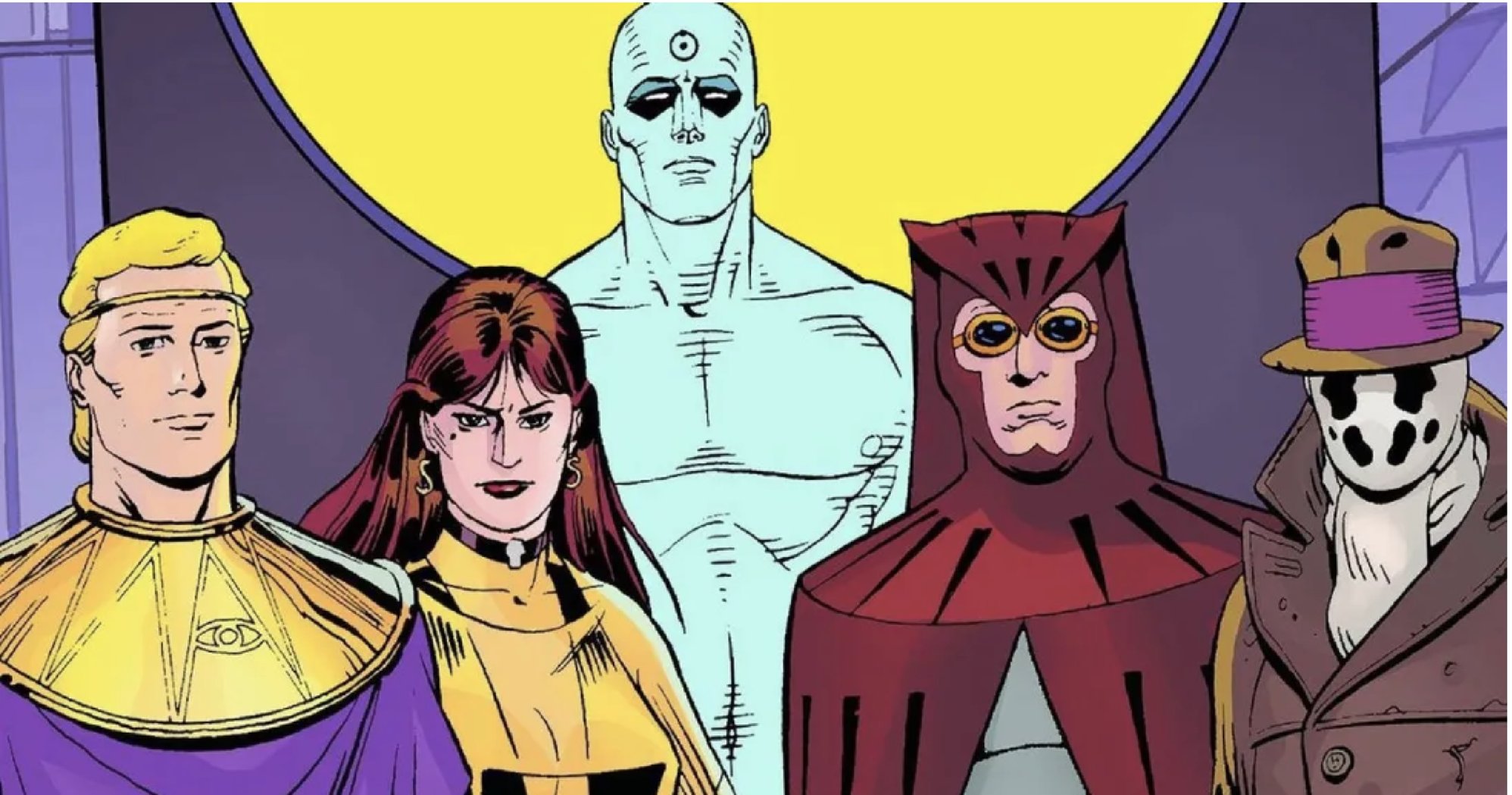Comic Books You Should Collect: Watchmen #1

Each day in February, Dibbs is showcasing iconic comic book issues that you should collect! Today’s comic is Watchmen #1! Alan Moore and David Gibbons’ masterpiece challenged readers to rethink what exactly a “hero” was.
Subscribe to get our best content in your inbox
By clicking “Submit” you agree to Dibbs
Privacy Policy and
consent to Dibbs using your contact data for newsletter purposes.
At Midnight, All the Agents
In 1986, Alan Moore and David Gibbons released a comic series that would change the comic industry forever. At the time, Alan Moore was trying to find a way to incorporate forgotten characters from the 40s and 50s into a dark story grounded in reality. His attempts fell short, and the project ultimately turned into DC’s Watchmen, a series set in an alternate universe of the 80s where masked vigilantes had been outlawed by The Keene Act. From the outside looking in, the comic appears to be just another spin on the popular superhero genre but reading deeper into the series it becomes a thesis on morality, political philosophies, and a true litmus test on what a “good guy” was.
Much of the story's conflict and divergence from our reality is Dr. Manhattan, a government scientist who gains “god-like” powers after a lab accident. This cliché superhero origin story is brought back down to reality by the characters overall apathy for humanity and the international political climate it creates. Dr. Manhattan is able to help lead the United States into victory during the Vietnam War, which sets Richard Nixon’s approval ratings at an all-time high. Term limits are appealed, and the Watergate scandal never occurs leading to Nixon still being president though 1985.

The Story
Two detectives are investigating the slaying of Edward Blake. Blake was thrown out the window of his high-rise apartment by an unusually powerful assailant(s). The detectives come to this theory due to the strength it would take to shatter such reinforced glass. Finally, they agree to cover up the murder so that no masked vigilantes interfere. One of the detectives mentions he’s not too worried about them since the Keene Act passed in 77’, making it illegal for masked heroes to operate. The other detective says he’s more worried about Rorschach, a vigilante who’s somehow managed to continue working even after the law took effect.
Later that night, Rorschach goes to Edward Blake’s apartment to investigate for himself. There he finds a hidden compartment containing a large arsenal of weapons, a hero's costume, and a picture of the Minutemen. These clues help Rorschach realize Edward Blake was actually the government-sponsored hero, the Comedian.
Elsewhere, two men trade stories of their experience donning the mantle as the costumed hero, Nite Owl. Dan Dreiberg wore the costume most recently, but Hollis Mason was the original. Dan leaves after realizing it’s midnight only to realize someone had broken into his apartment. To Dan’s surprise he finds Rorschach sitting at his kitchen table, eating a can of cold beans. Rorschach reveals to Dan that the Comedian was murdered, and the two continue their discussion in Dan’s workshop. Dan reckons Blake’s murder could be a political killing, as he’d made a lot of enemies while he was toppling Communist countries Rorschach isn’t so sure, and instead speculates that someone is coming after costumed heroes. He points out that The Comedian has had a lot more enemies over the past forty years. Rorschach hands over The Comedian’s smiley face button with his blood splattered on it.
Rorschach goes to billionaire Adrian Vedit, who he used to know as Ozymandias. Adrian suggests it’s a political killing by the Soviets, but Rorschach points out that the Soviets would never choose to do such a thing since America had been in possession of Dr. Manhattan since 1965. Rorschach presses his theory, but Adrian mentions that The Comedian had more enemies than the Soviets. He says “the man was practically a Nazi”. Rorschach defends Blake, and uses it as an opportunity to call Adrian a quitter and a sellout. Adrian mentions he retired from being a superhero before the Keene Act. Rorschach disappears.
At the Rockefeller Military Research Center, Dr. Manhattan and Laurie Juspeczyk are surprised with a visit from Rorschach. The two already knew about Blake’s death, and were told by C.I.A that the Libyans were suspected. Rorschach suggested his theory, but Dr. Manhattan hits him with a cold line about life and death being “unquantifiable abstracts”. Laurie speaks out against Blake, as her mother had been assaulted by him when they were in the Minutemen. She and Rorschach get into an argument, and Dr. Manhattan teleports Rorschach outside of the research center.
Laurie decides to go out to dinner with Dan while Dr. Manhattan finishes up research. She complains about relationship with Dr. Manhattan and how out of touch with humanity he’s become. The two laugh while trading stories from their glory days as masked heroes.
Legacy
Watchmen had a lasting impact on the comic industry, and even helped change the way comics were collected and enjoyed. DC’s choice to keep Watchmen in print through trade paperback books, helped the industry move to a larger adoption of what's commonly referred to now as a graphic novel. The series was also famously adapted to a feature film in 2009 by Zac Snyder, and eventually got a sequel in 2017 titled ‘Doomsday Clock’. A nine episode mini-series was created in 2019 and aired on HBO.
The original Watchmen series along with Batman: The Dark Knight Returns was what inspired Vincent Connare to create the Comic Sans font.
Read More Alan Moore
Miracleman by Alan Moore and Alan Davis
From Hell by Alan Moore and Eddie Campbell
Batman: The Killing Joke by Alan Moore and Brian Bolland

